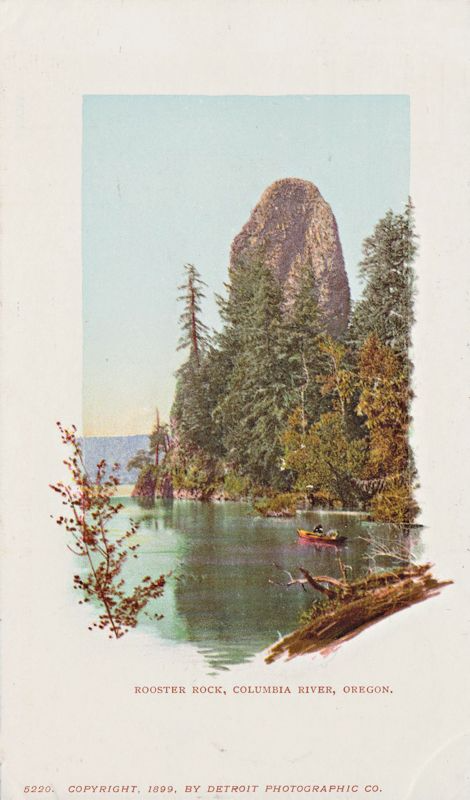Clone-A-Willy Deep Dive ~
A History of Nude Communities (Part Two)

Around twenty-two miles east of Portland proper and alongside the Columbia River lies a magical beach called Rooster Rock State Park. Some might know it exclusively as Cock Rock, and it’s been a popular site since the 1970’s.
According to the park’s Wiki, Rooster rock was referenced in the Lewis and Clark journal as their camping place in November of 1805. The 30 feet high, 10 feet thick column's original name was "Cock Rock" and the Chinook word for the rock is Iwash, referring to penis. The Mazamas published this in 1916: “The ancient name "Woutoulat" is preferable to Rooster rock. The one is redolent of the old time myths, and the religious symbolism that reaches back to a time anterior to the traditions, while the other serves no purpose, outside of being a mere name, the unsuitableness of which invariably calls forth the query, "Why?"
It’s strange that for a state-run beach with significant cultural emphasis in the naturalist community, there is very little information to be found outside of the park’s different names. Many Portlanders know that the east side of the state park is designated as clothing-optional, but it’s even news to us that this is the first officially designated clothing-optional beach in the U.S.
The clothing optional area has three distinctive areas: the sandy beach, the wild brush and private areas of the forest behind the beach, and a volleyball area. When visiting, it is immediately clear that the area is more LGBTQIA+-friendly than other clothing optional beaches, where typically the main area is often occupied by straight visitors. Cock Rock is Clone-a-Willy-approved, and a recommendation for spending a sunny day in beautiful nature.
Want to read more about nudist communities? Keep an eye on our blog, as this is an ongoing series aiming to research more cultural aspects of body positivity.
Feel free to connect with us over Instagram and Twitter for the latest content and sales on our products.



